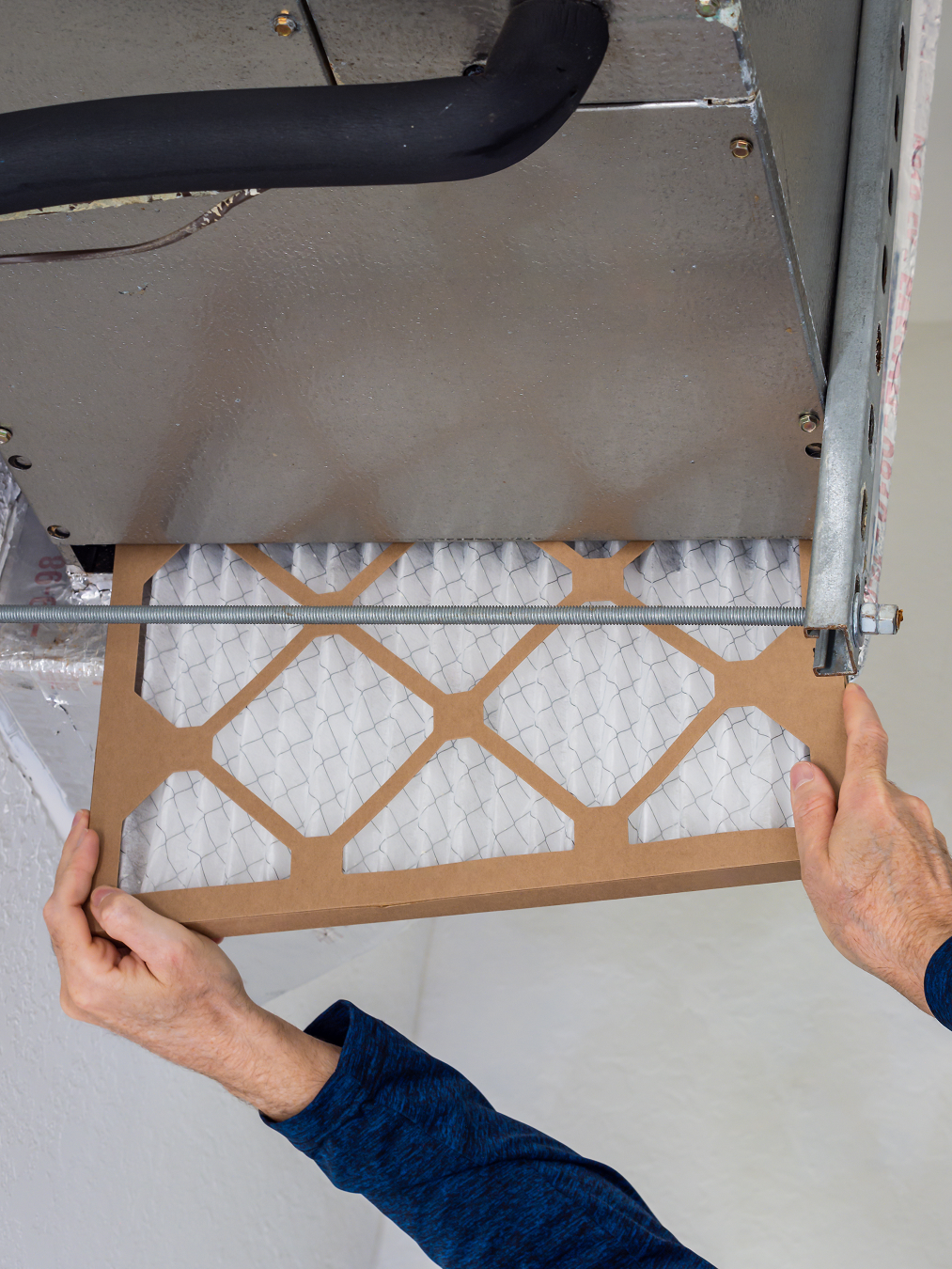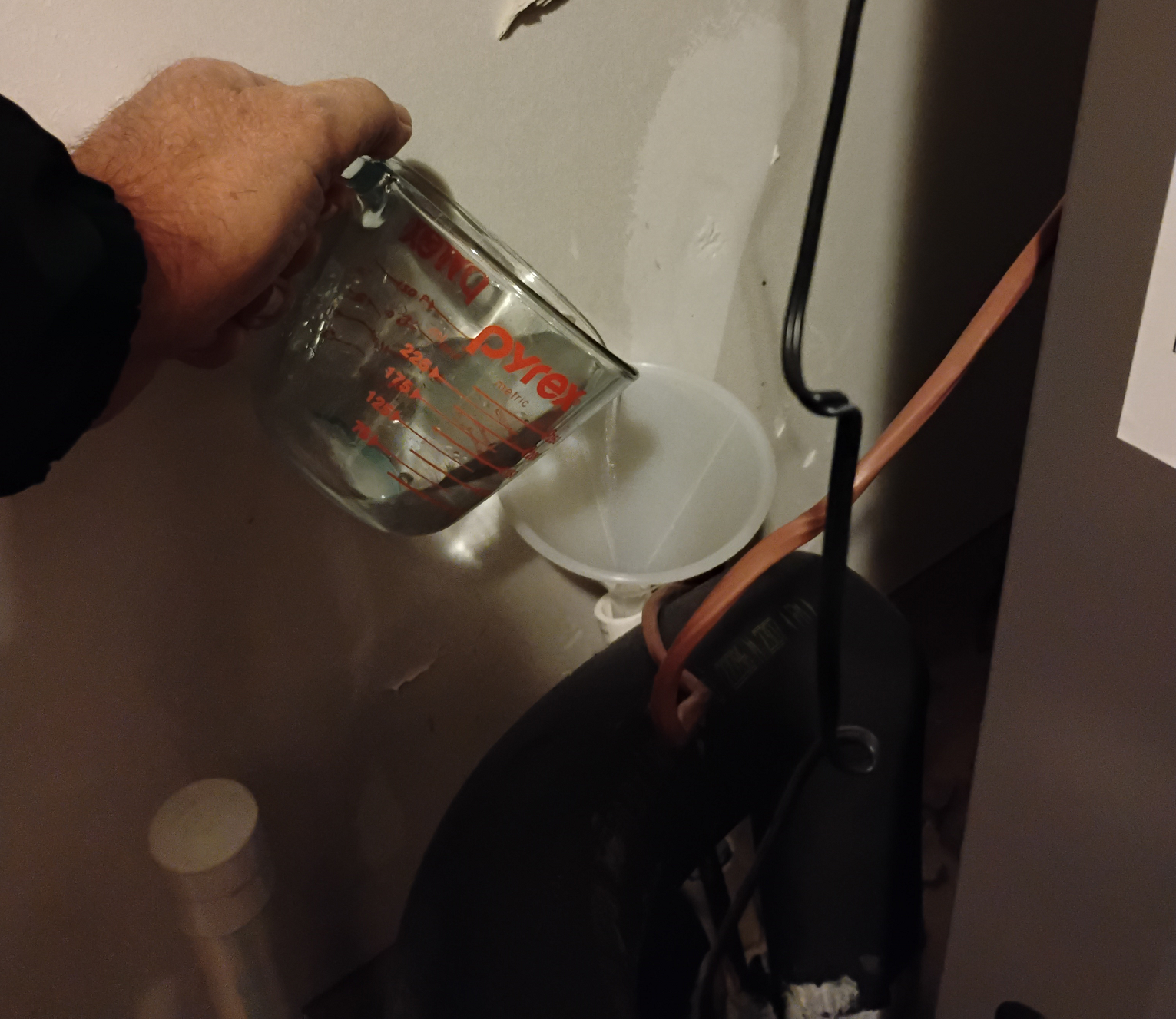Why is My Carrier Air Conditioner Leaking Water?

The most common cause of a Carrier air conditioner water leak is a clogged condensate drain line. Other causes of leaking include a cracked condensate drain pan, dirty air filter and frozen evaporator coils.
In this article, we’ll explain what creates condensate water in your Carrier air conditioner and what can go wrong to cause the water to leak.
KEY TAKEAWAYS
- By far, the most common reason for water leaks in a Carrier air conditioner is a clogged condensate drain line, often caused by algae or mold buildup. Clearing the clogged condensate drain line will fix this type of leak.
- Other causes of leaks include a cracked condensate drain pan, dirty air filter reducing airflow, or frozen evaporator coils due to low refrigerant.
- Regularly replace air filters, pour vinegar or bleach into the condensate drain line monthly, monitor the drain line's output, and schedule annual professional HVAC maintenance to ensure optimal AC performance and prevent leaks.
If you’re facing this problem right now, you’ll need to act quickly to resolve the problem.
What Causes Condensate Water in Your Central Air Conditioner?
Your Carrier air conditioner doesn’t just cool your home—it also removes excess moisture from the air. Warm, humid air passes over the evaporator coil, which contains refrigerant that cools the coil to below the dew point. As the humid air touches the cold surface, water vapor condenses into liquid, just like droplets forming on a cold glass of water in summer.
This condensate water collects in a drain pan located beneath the evaporator coil. From there, it typically flows out through a condensate drain line, exiting your home either via a small pipe outside or into a drain system.
Why Is My Air Conditioner Leaking Water?
The number one reason for a leaking Carrier air conditioner is a clogged condensate drain line. Over time, dirt, dust, and biological growth like mold or algae can accumulate inside the drain line.
When this happens, the water can't flow out as intended. Instead, it backs up into the condensate drain pan.
The pan is only designed to handle a small volume of water. If the water keeps flowing without a way to exit, it will eventually overflow, causing the leak.
Carrier central air conditioners typically have a float switch in the drain system that detects when condensate water is backing up in the drain line and causing the condensate drain pan under the evaporator to overflow.
When that float switch trips, the control board for the AC will shut the system down and the unit won’t cool. This can happen at the same time that you discover that your Carrier air conditioner is leaking water.
To keep your AC system running, you’ll need to clear the condensate drain line quickly.
Troubleshooting a Water Leak
Fixing a leaking air conditioner starts with identifying the cause. Because a clogged condensate drain line is almost always the cause of condensate water leaking, you’ll need to check and clear that drain line first.
Clearing a Clogged AC Condensate Drain Line
Here’s a popular YouTube video that shows how to clear a clogged condensate drain line:
After clearing the condensate drain line clog, you may need to use a wet/dry shop vacuum to pick up water under the inside unit that leaked.
Resolving Other Causes for Water Leaking from Your Carrier Air Conditioner
While other causes of leaks are much less prevalent than a clogged drain system, you may encounter one of these problems causing the system to leak water:
Improper Air Flow Through the Evaporator
Check and replace the air filter if it’s dirty. A clogged air filter reduces airflow over the evaporator coil, leading to excess condensation and potential overflows.
Make sure return air vents and supply ducts and vents aren’t blocked, which could cause frost and moisture buildup on the evaporator and result in overflowing the condensate drain pan.
Cracked Condensate Drain Pan
Although rare, a cracked or damaged drain pan under the evaporator can cause water to leak out under the inside unit instead draining to the outside of your home.
Even though you may be able to identify this cause for a leak, you’ll likely need to schedule air conditioner repair service to replace the drain pan.
Replacing the condensate drain pan in a Carrier air conditioner isn’t a DIY repair that we recommend attempting on your own.
Low Refrigerant Charge
In some Carrier central air conditioners, low refrigerant charge can sometimes cause excessive moisture buildup on the evaporator that eventually results in water overflowing the condensate drain pan.
This type of issue will need to be addressed by a service technician because refrigerant can only be handled by service providers certified to recharge refrigerant. Schedule AC repair when you suspect that low refrigerant level in your system is causing a water leak.
Preventing Future Water Leaks in Your Carrier Air Conditioner
Routine maintenance plays a critical role in keeping your Carrier air conditioner running smoothly and leak-free. Here’s what you can do:

Replace the Air Filter Regularly
Replace your air filter every 1-3 months during peak cooling seasons to keep air flowing properly through the evaporator and avoid condensate water leaks.

Pour a Cup of Vinegar or Bleach Down the Condensate Drain Line Monthly
To prevent algae and mold buildup from clogging the condensate drain line, pour vinegar or bleach through the stand pipe of the drain line every month.
Monitor Condensate Drainage
Periodically check for condensate water dripping from the drain line outside your house. You should also see the ground under the drain outlet constantly wet during the summer.
If you suspect that water isn’t draining properly through the drain line, take immediate action to clear the drain system. Use a wet/dry shop vacuum or plumber’s snake to clear the drain line.

Schedule Professional Maintenance
Annual air conditioner maintenance and cleaning by an HVAC technician help catch potential problems before they escalate. A professional will clean the evaporator coil, check the drain system, and ensure your AC runs efficiently.
With regular maintenance and a proactive approach, you can enjoy a cool, comfortable home without the worry of unexpected water leaks in your Carrier air conditioner.
Schedule your HVAC repair now!
Rely on our skilled technicians to diagnose and repair your HVAC equipment, ensuring optimal comfort in your home.
Was this information helpful?
Repair HVAC Resources
Discover the average cost of fixing a furnace on searshomeservices.com
Learn how inverter AC systems use a variable speed compressor to efficiently cool your home.
Discover how emergency heat works in a heat pump system.
Learn how a heat exchanger works in a gas furnace.
Glossary Terms
A humidifier is a device designed to increase humidity levels in a single room or an entire building, improving air quality and comfort.
Swamp cooling, also known as evaporative cooling, is a method that cools air through the natural process of water evaporation. It is energy-efficient and environmentally friendly, particularly effective in hot, dry climates.
Freon is a trade name for a group of chlorofluorocarbons (CFCs) used as refrigerants in air conditioning and refrigeration systems, known for its role in ozone depletion.
An inverter AC unit is an air conditioning system equipped with inverter technology that allows it to vary the compressor speed, enabling precise temperature control and increased energy efficiency.
Common Appliance Symptoms
The most common reasons your Whirlpool washer won't stop filling are a clogged water valve, a bad water-level pressure switch, or a malfunctioning electronic control board.
The most common reasons your Whirlpool washer won't spin or drain are a seized gearcase, a broken motor, or a failed door switch.
The most common reasons your Whirlpool washer won't turn off are a malfunctioning electronic control board, broken motor or a jammed door lock assembly.
The most common reasons your Whirlpool washer won't start cycle are a malfunctioning electronic control board, jammed door lock assembly or a faulty user interface.
The most common reasons your Whirlpool washer vibrates are a damaged suspension rod, malfunctioning electronic control board or a dead fan.
The most common reasons your Whirlpool washer is experiencing the rinse cycle not working are a broken lid switch, a bad water-level pressure switch, or a malfunctioning electronic control board.



